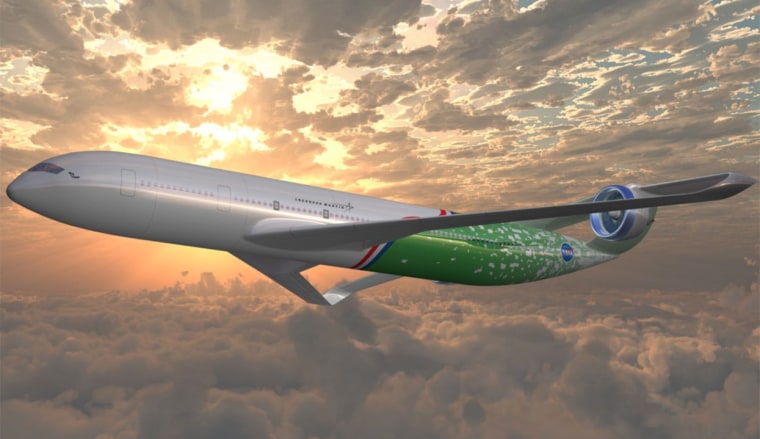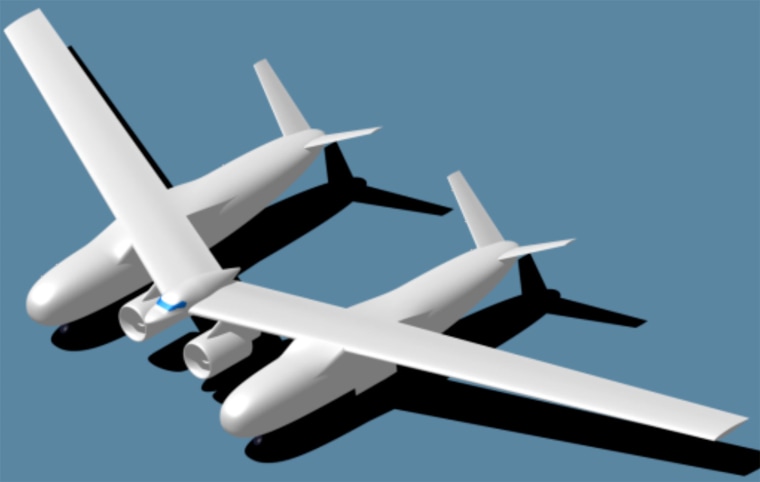NASA has offered a first peek at possible airplanes of the future that are currently being explored by titans of the aviation industry.
In late 2010, NASA awarded contracts to three teams — from Lockheed Martin, Northrop Grumman and The Boeing Co. — to produce advanced-concept designs for aircraft that could take to the skies in 2025.

The initial design concepts look very different from each other. Northrop Grumman envisions a plane with two fuselages sharing a middle wing under which dual jet engines are slung.
Boeing, meanwhile, is working with a "flying wing" concept that resembles a stealth bomber in that it has an arrowhead- or wedge-shaped profile in place of an obvious, tubular fuselage.
Lockheed Martin's initial design looks the most like a commercial plane of today, but the two lateral wings wrap around to the rear of the plane and connect over top of where a tail fin would be, and the engines appear here as well.

All final designs will have to meet NASA's requirements for less noise, cleaner exhaust and lower fuel consumption. That will involve a complex dance of tradeoffs between all of the advanced technologies available for these aircraft.
The proposed airplanes also will have to operate safely in a more modernized air traffic management system.
In addition, each plane will have to be able to fly up to 85 percent of the speed of sound; cover a range of about 7,000 miles; and carry between 50,000 and 100,000 pounds of either passengers or cargo.
For the rest of this year, each team will be exploring, testing, simulating, keeping and discarding innovations and technologies to make their design a winner.
